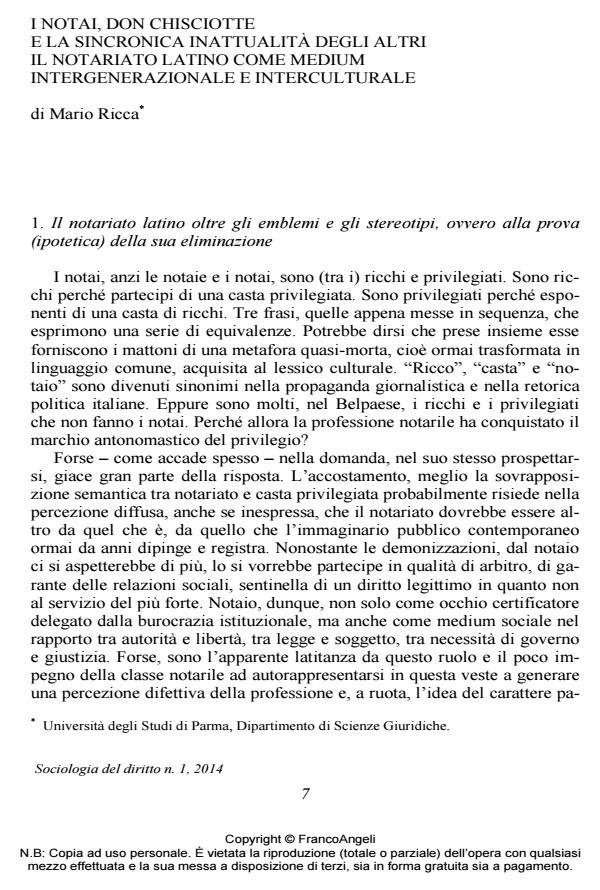Notaries, Don Quixote and the synchronic out-datedness of others. The Latin notary as an intergenerational and intercultural medium
Journal title SOCIOLOGIA DEL DIRITTO
Author/s Mario Ricca
Publishing Year 2014 Issue 2014/1
Language Italian Pages 25 P. 7-31 File size 221 KB
DOI 10.3280/SD2014-001001
DOI is like a bar code for intellectual property: to have more infomation
click here
Below, you can see the article first page
If you want to buy this article in PDF format, you can do it, following the instructions to buy download credits

FrancoAngeli is member of Publishers International Linking Association, Inc (PILA), a not-for-profit association which run the CrossRef service enabling links to and from online scholarly content.
This essay analyses the profession of the notary from an unusual anthropologicalsociological perspective. Something of a scapegoat for contemporary journalism, the institution of the Latin notary has inhabited Italy’s recent history, playing an important role in the process of juridification of everyday life, so of the formation of living law. The problem is to ascertain whether this function also continues within the shell of the activity conducted by individual notaries today: a complex operation, especially in communication terms. In order to achieve its purpose, while keeping its distance from stereotypes and commonplaces, the text transforms the affluent notary who populates our popular imagery into a mimic of Don Quixote taking issue with the usual way of thinking, a semi-hero devoted to demonstrating the synchronic currency of the weakest members of society, within the framework of the law. Undergoing this transmutation, the institution of the notary is found to offer an unexpected metaphor of modernity, of its ambiguous parabola and of its unachieved potential.
Keywords: The Latin notary ‒ Otherness; Intercultural ‒ Legal ethnology ‒ Modernity
- Intercultural Spaces of Law Mario Ricca, pp.291 (ISBN:978-3-031-27435-0)
Mario Ricca, I notai, don chisciotte e la sincronica inattualità degli altri il notariato latino come medium intergenerazionale e interculturale in "SOCIOLOGIA DEL DIRITTO " 1/2014, pp 7-31, DOI: 10.3280/SD2014-001001